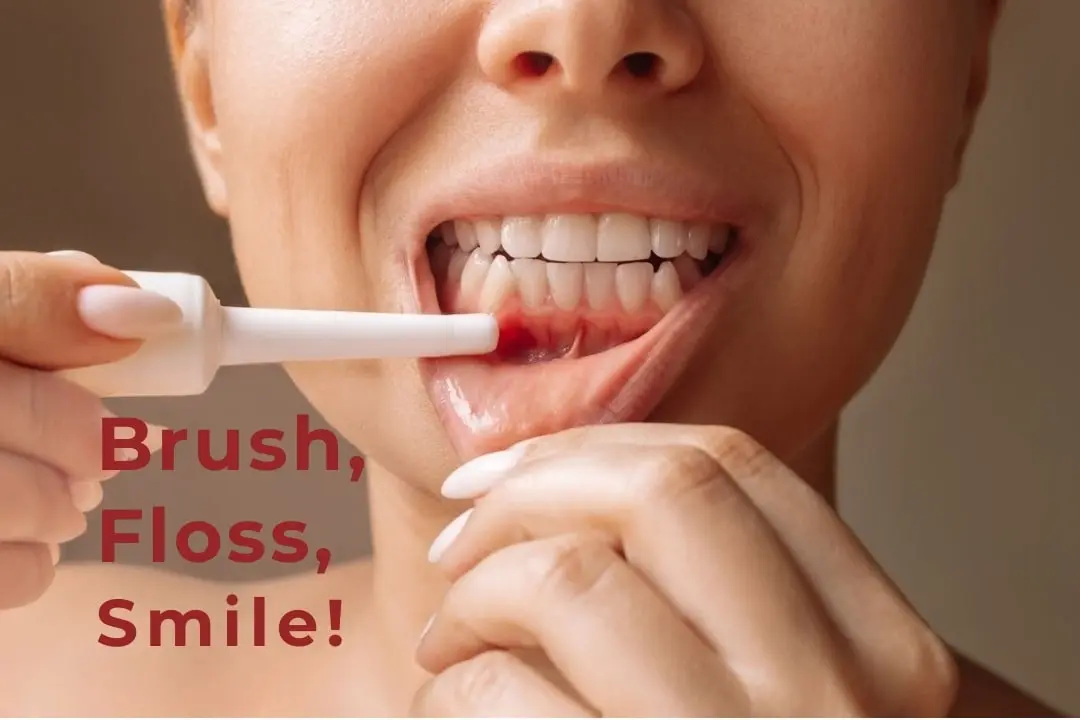How does a healthy gums looks like?
Generally, most people prioritise dental health and appearance over gum health. There are various reasons for this. Firstly, the advertising sector constantly presents us with promotional videos from brands producing oral hygiene products such as toothpaste, dental floss, mouthwash and toothbrushes. Secondly, toothache has a significant negative effect on us when our health is poor. Another reason may be that, when admiring the smiles of our favourite celebrities, we focus more on their teeth than their gums.

However, the fact remains that healthy gums are at least as important as teeth, both aesthetically and in terms of health. We say 'at least' because dental health largely depends on gum health.
So how do you know your gums are healthy?
There are various indicators that can help you to understand whether your gums are healthy. If you do not meet one or more of these criteria, we recommend that you consult a specialist dentist.
Firstly, check the colour of your gums. The colour of healthy gums can vary from person to person. For people with fair skin, the colour can range from light pink to coral. In people of Mediterranean or Middle Eastern descent with medium-toned skin, the gum colour can range from coral tones to a shade between pink and red. In people of African or South Asian descent with dark skin, gum colour can range from medium pink to dark pink or brown. This is entirely due to the pigment codes that we have inherited genetically from our ancestors. However, regardless of gum colour, there should be no red, purple or white spots. The colour should be evenly distributed across the gums. Otherwise, a dentist should be consulted.
Healthy gums have a firm texture. Despite their flexible structure, there should be no swelling, gum recession or fluid accumulation (oedema).
Healthy gums completely cover the tooth root. This living tissue also surrounds the neck of the tooth. The gum fills the space between the teeth in a triangular shape. The gums should neither recede from nor excessively cover the tooth in a swollen manner. They should form an ideal contour.
There should be no bleeding when cleaning your teeth, i.e. when brushing or flossing. Bleeding gums while eating or maintaining oral hygiene is a sign of gum disease. You should not feel sensitivity or pain when you gently touch your gums.
An increase in bacterial flora in the gums can cause a metallic taste and bad breath. This is also a sign that your gums are unhealthy.
What are gums?
The gums are living soft tissue that protects and supports the teeth and the jawbone to which they are anchored. They also contribute to the aesthetics of a smile. They act as a barrier, preventing food and bacteria from passing from the oral cavity to the area where the tooth roots and jawbone are located.
However, when problems such as gum inflammation or recession occur, bacteria and food debris can progress towards the tooth root and cause infection. This makes it difficult for the tooth root to anchor itself in the jawbone, and in advanced cases can lead to tooth loss.
At the same time, the gums provide significant support to the tooth by surrounding the neck and root areas. This ensures that the force of chewing is distributed evenly. It also makes the tooth more resistant to impact.
The gums are also an important factor in smile aesthetics. Gums that surround the tooth with a balanced contour and homogeneous colour add significant value to your smile.
What should we do to keep our gums healthy?
Gum health depends on many factors. Our overall health is holistic. Healthy gums are also a sign of a healthy body. At the same time, gum disease may affect only the gums, or it may indicate other health issues.
Maintaining healthy gums requires:
- We should brush our teeth at least twice a day. When brushing, you should use fluoride toothpaste. Brush your upper teeth from top to bottom and your lower teeth from bottom to top, one by one. Brush the front and back surfaces of your teeth. Your toothbrush should be soft or medium-hard. Clean with gentle movements, without pressing too hard. You should also gently massage your gums using very light pressure.
- You should clean between your teeth every day using either interdental brushes or dental floss. Gently clean each gap between your teeth without damaging your gums.
- It is as important to control bacterial formation as it is to clean away food debris when it comes to oral hygiene. Therefore, be sure to clean your tongue too, using either a tongue scraper or your toothbrush. This will help to maintain the normal number of bacteria living in your mouth.
- Rinse your inner cheeks, tongue, palate and the area under your tongue with mouthwash.
- Do not neglect your dental check-ups. On average, it is recommended that every healthy person visit the dentist twice a year. This allows your dentist to detect any issues early and take precautions. In addition, tartar cleaning is very important for gum health.
- Your eating habits also affect gum health. Sugary, acidic and sticky foods have a negative effect on gum health, whereas vitamin C and calcium have a positive effect.
- Smoking, illegal drug use and excessive alcohol consumption can cause serious harm to your oral health. Smoking slows down blood circulation. Some illegal substances can cause tooth loss and advanced gum disease within a short period of time.
- Stress can cause immune problems. This can also lead to gum problems. In this regard, breathing exercises and walking can be beneficial.
FAQs
How can gum disease be treated?
If you have gingivitis, the initial stage of gum disease, your dentist will clean away the tartar and plaque. Regular and careful oral hygiene, proper nutrition and routine dental check-ups will then restore and maintain your gum health.
If your gum disease has progressed to the advanced stage, also known as periodontitis, your dentist will open the gum tissue to clean the infection. Gum reshaping may also be necessary. If you have experienced bone or tissue loss, efforts will be made to restore it using bone and soft tissue grafts.
What does the start of gum disease look like?
In the initial stage, symptoms such as gum bleeding and redness are observed. Sensitivity and swelling also appear. In the advanced stage, known as periodontitis, the gums recede and there is a metallic taste in the mouth and bad breath. Your teeth will begin to loosen and lose stability.
What do swollen gums look like?
The gums, particularly in the upper regions, become swollen and change colour. This swelling is concentrated around the roots of the teeth and bleeding occurs.
With our guaranteed treatments, we are always here for you.
Don’t hesitate to contact us, We will be happy to help anytime.



